Pump shafts are more than just rotating components; they are the backbone of centrifugal and positive displacement pumps. Every bit of energy transferred from the motor to the impeller or rotor passes through the shaft, making it central to how the pump performs in real-world conditions.
A well-designed pump shaft ensures stability, reduces vibration, and prevents premature wear on seals, bearings, and couplings. On the other hand, a poorly engineered or misaligned shaft can trigger cascading failures leading to downtime, costly repairs, and even safety risks.
This is why pump shaft design plays a decisive role in pump shaft reliability, overall performance, and the total cost of ownership. From material choice to dimensional accuracy, every design decision directly affects efficiency, lifespan, and maintenance cycles.
Understanding the importance of pump shaft design helps operators, engineers, and maintenance teams prevent breakdowns and achieve consistent output.
Brief breakdown:
- Design Matters: Proper shaft geometry and alignment reduce vibration, stress, and premature wear.
- Material Choice is Critical: Stainless steel, duplex steel, and advanced alloys safeguard against corrosion, fatigue, and chemical attack.
- Maintenance Extends Life: Condition-based monitoring, lubrication, and alignment checks prevent costly breakdowns.
- Innovation is Changing the Game: Surface coatings, heat treatments, and AI-driven diagnostics are redefining shaft durability.
- Chemitek Delivers Real-World Reliability: From material expertise to field support, Chemitek ensures pump shafts last longer and perform at their best.
What Is a Pump Shaft?
A pump shaft is the central rotating element in a pump that transmits torque from the motor to the impeller (in centrifugal pumps) or rotor (in positive displacement pumps). In simple terms, it is the backbone of the pump’s mechanical drive, ensuring that rotational energy is effectively transferred to move fluids.
Uses of Pump Shaft

1. Torque Transmission
The shaft ensures smooth transfer of motor power to the impeller. A reliable shaft minimizes energy losses, reduces wear, and prevents unexpected breakdowns during continuous operation.
2. Alignment and Stability
Shafts keep the impeller and coupling aligned, reducing vibration and noise. This stability is essential to maintain pump efficiency, extend equipment life, and avoid costly downtime.
3. Load Bearing
Pump shafts absorb both axial and radial loads generated during pumping. A well-designed shaft prevents premature bearing wear, safeguards seals, and keeps the pump operating under demanding conditions.
4. Seal and Bearing Support
By supporting seals and bearings, the shaft ensures controlled fluid movement, prevents leakage, and reduces frictional losses. This directly impacts reliability, safety, and maintenance cycles.
5. System Efficiency and Longevity
Ultimately, the shaft ties the pump system together, enabling high uptime, lower maintenance costs, and consistent performance even under challenging operating conditions.
Types of Pump Shafts and Their Applications
Pump shafts are designed in multiple configurations to balance strength, weight, and operational requirements. Each type brings distinct performance benefits and is suited for different operating environments:
- Solid Shafts: The most common design, valued for their durability and simplicity, making them reliable for standard pumping operations where mechanical robustness is critical.

- Hollow Shafts: Lighter than solid shafts, these reduce rotational inertia and improve energy efficiency in systems where weight savings enhance performance.

- Flexible Shafts: Built to absorb vibrations and slight misalignments, they are ideal in applications where dampening is required to prevent premature wear.
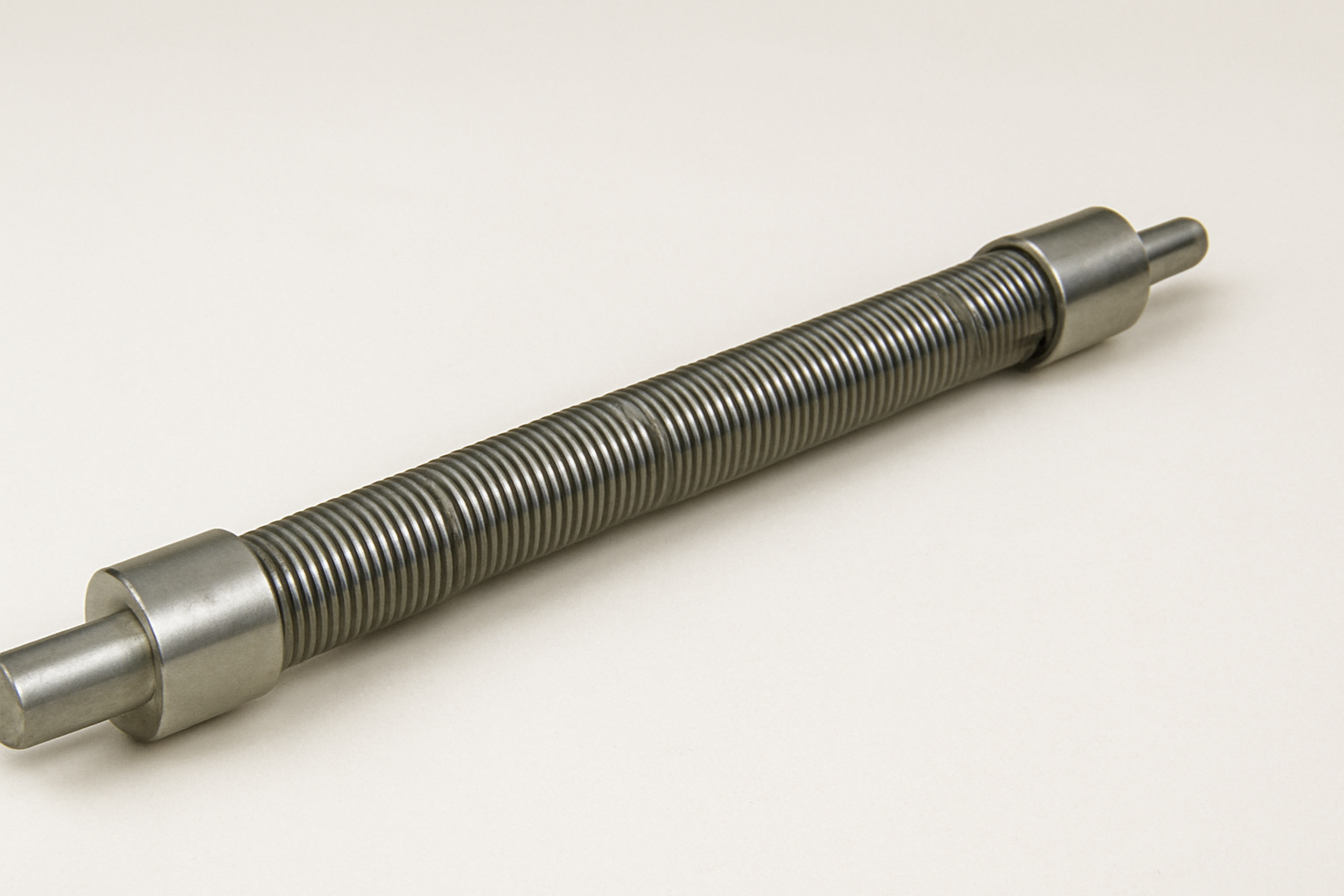
- Sleeved Shafts: Incorporate a protective sleeve over the core shaft, extending service life by minimizing direct wear from seals and pumped fluids.
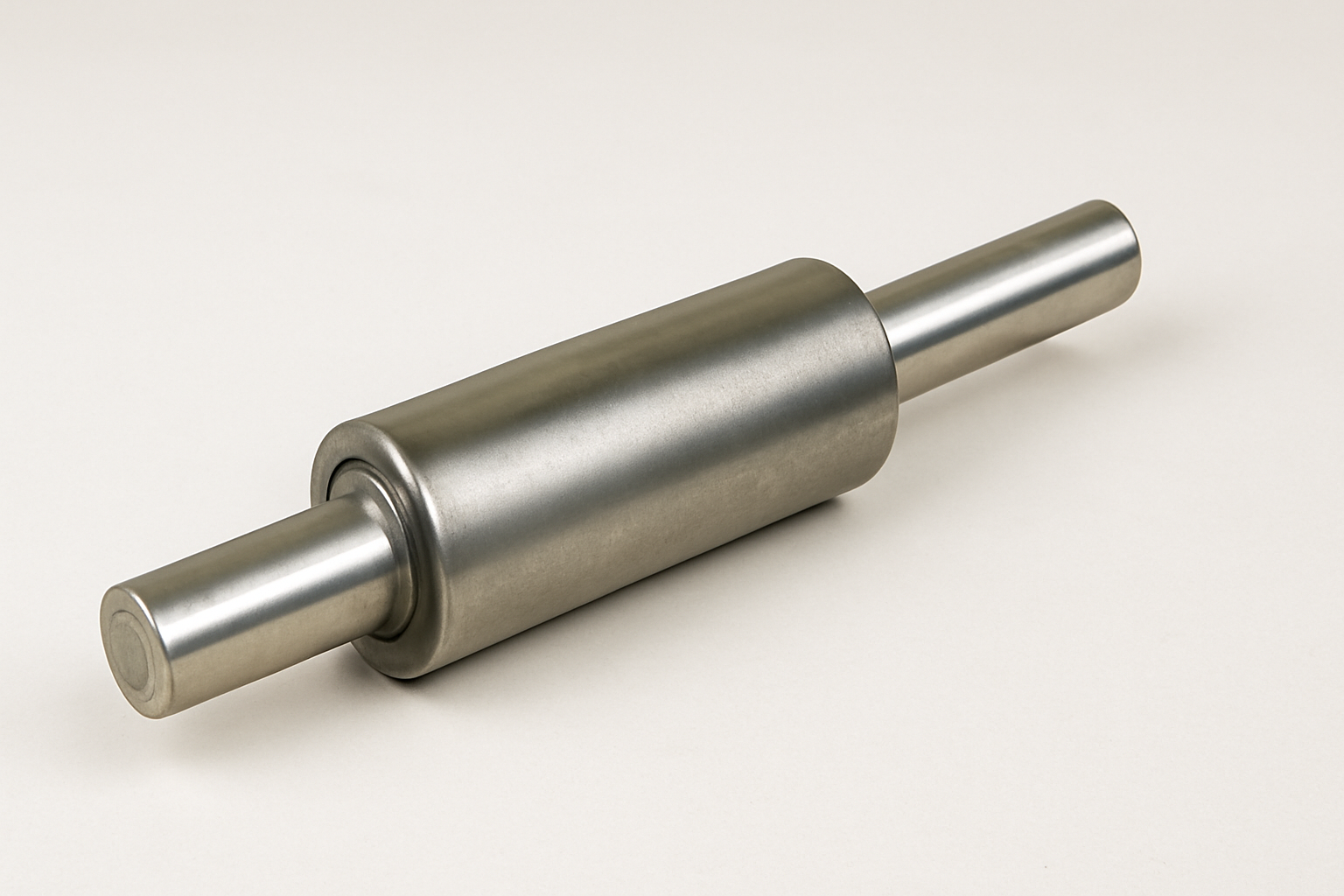
- Extended Shafts: Used in vertical turbine or deep-well pumps, these allow torque transfer over long distances without compromising stability.

- Custom-Engineered Shafts: Tailored to specific industry needs, with unique materials, coatings, or geometries that optimize performance under highly specialized operating conditions.

By aligning shaft design with application demands, operators can optimize torque transfer, reduce energy consumption, and extend pump life while minimizing maintenance costs.
Pump Shaft Materials: Strength and Corrosion Resistance
Choosing the right pump shaft material is often the difference between reliable long-term performance and premature failure.
Since shafts are constantly exposed to mechanical stress, chemical environments, and fluid properties, their material composition directly impacts strength, durability, and corrosion resistance.
- Carbon Steel Pump Shafts: These are widely used for general-purpose pumping because they are strong, cost-effective, and easy to machine. While they handle moderate wear and stress well, their corrosion resistance is limited, making them better suited for applications where fluid exposure is not highly aggressive.
- Stainless Steel Pump Shafts: Stainless steel is the industry’s most common choice for demanding environments. Its high durability and corrosion resistance make it ideal for chemical processing, food-grade pumps, and wastewater treatment plants.
Stainless steel shafts maintain strength under continuous exposure to water and harsh chemicals, significantly reducing maintenance needs. - Alloy and Duplex Steel Shafts: For operations involving highly corrosive fluids such as seawater, brine, or harsh industrial chemicals, alloy steels and duplex stainless steels deliver the highest resistance to both corrosion and pitting. They balance mechanical strength with chemical stability, ensuring reliable shaft performance even in extreme conditions.
Selecting the right shaft material solves the problem of corrosion and wear, but material strength alone doesn’t guarantee reliability. To achieve consistent performance, engineers must also look at how the shaft is designed, balanced, and aligned within the pump system.
Pump Shaft Design Considerations
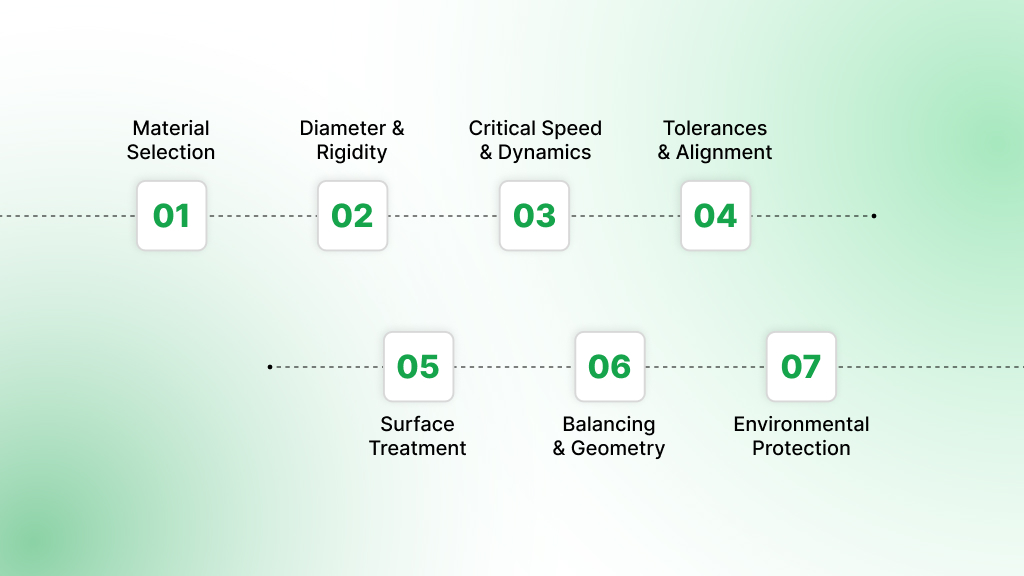
A pump shaft’s design is the backbone of reliability. Even a small oversight in engineering can cascade into failures like vibration, seal leakage, or premature bearing wear. To avoid these issues, modern shaft design focuses on strength, precision, and adaptability to operating conditions.
- Material Selection: Choosing the right material ensures durability in corrosive and abrasive environments. Options range from stainless steels and duplex alloys (for chemical resistance) to hardened carbon steels and coated shafts (for wear-heavy duties).
Advanced composites and ceramic coatings are increasingly used in aggressive chemical or slurry applications. - Diameter and Rigidity: A correctly sized shaft minimizes deflection under torque and hydraulic loads. Oversized shafts resist bending but add weight and cost, while undersized shafts amplify vibration.
The shaft’s slenderness ratio (length-to-diameter) is a critical factor: lower ratios improve stiffness and reduce bending stresses. - Critical Speed and Dynamics: Shafts must be designed so their natural frequency (critical speed) lies well outside the pump’s operating speed.
Crossing critical speed zones causes resonance, leading to destructive vibration. Proper dynamic balancing and modal analysis during design help mitigate this risk. - Tolerances and Alignment: Precision machining keeps run-out and misalignment within microns. This prevents uneven bearing loads, minimizes internal stresses, and extends seal life.
Shaft shoulders, keyways, and coupling fits are designed with tight tolerances to reduce stress concentrations. - Surface Treatment and Finishing: Polished or coated surfaces enhance fatigue resistance and reduce frictional wear where seals or bearings interface with the shaft.
Advanced finishing methods such as shot peening or nitriding further increase resistance to cracking under cyclic loads. - Balancing and Geometry: Symmetry in shaft geometry is vital to smooth rotation. Imbalanced or eccentric shafts amplify vibration, accelerating wear on bearings and mechanical seals.
Designers incorporate stepped geometries and optimized keyway placement to maintain balance under operational loads. - Environmental Protection: Shafts exposed to corrosive fluids or abrasive slurries often integrate sleeves, liners, or replaceable wear rings. These sacrificial components protect the core shaft and make maintenance more cost-effective.
By integrating these principles, pump shafts can operate smoothly over long lifespans while resisting the most common failure triggers.
Common Pump Shaft Failures and Maintenance Best Practices
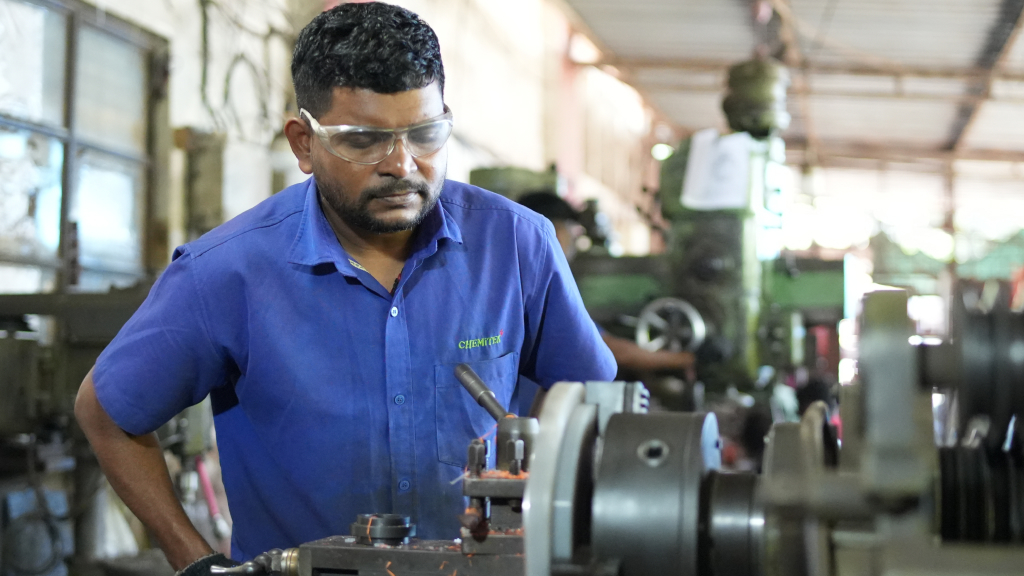
1. Misalignment and Its Impact
Even minor shaft misalignment creates uneven loads on bearings and seals, accelerating wear and reducing efficiency. Left unchecked, it can cause premature shaft bending or breakage.
Maintenance strategy: Regular laser alignment checks ensure the shaft and motor remain in proper orientation. Pair this with condition monitoring systems to detect early misalignment through vibration signatures.
Many plants schedule alignment inspections only after issues arise. Shifting to predictive alignment monitoring can extend shaft life by years.
2. Fatigue and Stress Cracks
Repeated cyclic loading weakens the shaft over time, especially in pumps handling fluctuating pressures or high-torque start-ups. This often manifests as micro-cracks that grow into full fractures.
Maintenance strategy: Non-destructive testing (NDT) methods, such as dye penetrant or ultrasonic inspection, help detect cracks before failure. Reducing unnecessary start-stops and ensuring balanced loads further mitigates fatigue.
A cracked shaft rarely shows visible warning signs until it’s too late. NDT inspections should be routine, not reactive.
3. Corrosion and Material Degradation
Exposure to aggressive fluids or poor material compatibility corrodes pump shafts, weakening their structure and leading to catastrophic failure.
Maintenance strategy: Choosing corrosion-resistant alloys or applying protective coatings prevents material degradation. Regular inspections of surface condition and pH monitoring of the fluid can help spot risks early.
Material selection isn’t a one-time decision; fluid chemistry may change with process modifications. Revisiting shaft material choices during process updates avoids costly surprises.
4. Vibration and Resonance Issues
Excessive vibration or resonance amplifies stresses, loosens couplings, and accelerates shaft fatigue. Common culprits include imbalance, cavitation, or improper foundation design.
Maintenance strategy: Continuous vibration monitoring combined with balancing and foundation reinforcement helps control dynamic stresses. Addressing root causes—such as cavitation or bearing wear ensures vibration doesn’t escalate.
Installing smart vibration sensors allows operators to track resonance patterns in real-time, providing actionable alerts before damage occurs.
Repair vs. Replacement: Making the Right Call
Even with proactive maintenance, shafts eventually face wear beyond repair. The decision framework is simple:
- Repair when cracks are shallow, misalignment is correctable, or coatings can restore protection.
- Replace when fatigue cracks run deep, corrosion has compromised structural integrity, or repeated failures occur within short intervals.
A shaft failure often costs more in downtime than the replacement itself. Planning replacements based on condition data, not just failure, avoids unplanned outages.
Chemitek’s Expertise in Pump Shaft Solutions
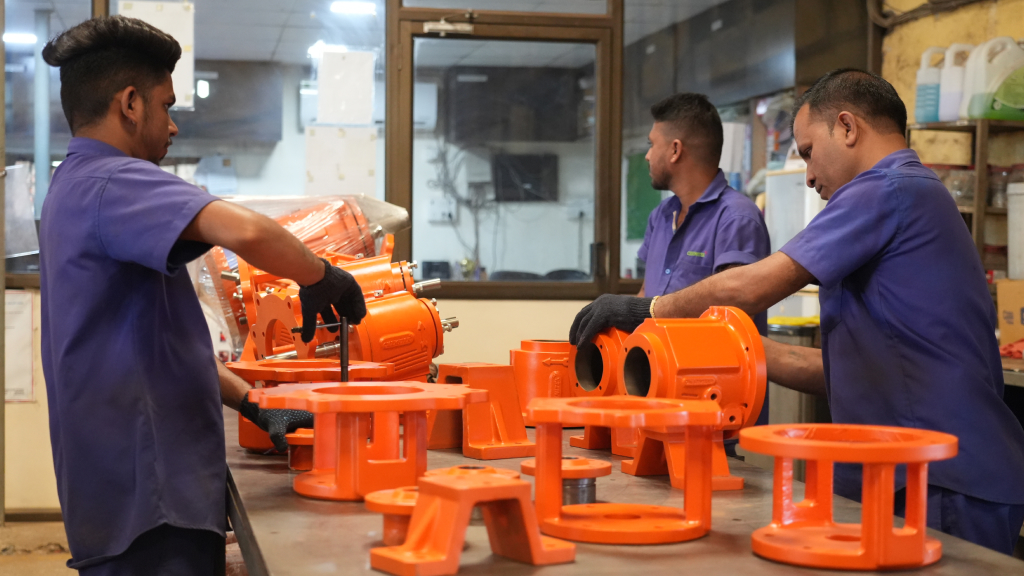
Understanding how shafts fail and how to maintain them is one thing; applying that knowledge effectively in the field is another. That’s where Chemitek comes in.
By combining advanced materials expertise with real-world engineering support, Chemitek bridges the gap between theory and practice, ensuring your pump shafts don’t just survive but deliver peak performance under the toughest conditions.
We achieve this through:
Composite Shaft Design for Durability & Corrosion Resistance
Chemitek’s NM Series features shafts made of PFA resin reinforced with metal armor. This advanced composite offers high chemical resistance with structural strength ideal for corrosive, abrasive, or high-temperature environments.
Precision Investment Casting for Geometric Integrity
Their pump shafts are manufactured with investment-cast components, ensuring tight tolerances and dimensional accuracy. This directly enhances alignment stability and reduces vibration under load.
Inherent Wear and Vibration Mitigation
The reinforced polymer design dampens vibration and resists wear, reducing stress on seals, bearings, and connected systems, right from commissioning.
Why This Matters for Pump Shaft Performance
Chemitek doesn’t just talk reliability, they build it into the shaft. Their engineered approach answers the problems you’ve learned about: corrosion, deflection, vibration, and material fatigue.
Conclusion
Pump shaft reliability isn’t just about understanding failure modes it’s about building a proactive system of prevention, monitoring, and timely intervention. From alignment at commissioning to ongoing lubrication and condition-based maintenance, every decision affects how long your shaft can withstand the stresses of real-world operation.
With advancements like surface hardening, protective coatings, and AI-driven monitoring, the industry now has tools to push pump shaft performance further than ever before. But technology alone isn’t enough it takes the right partner to apply these solutions effectively in your specific environment.
That’s where Chemitek steps in. By combining advanced shaft technologies with field-tested expertise, Chemitek helps you bridge the gap between design theory and operational reality. The result? Pump shafts that don’t just last longer, but deliver consistent performance under the harshest operating conditions.
Connect with Chemitek’s engineering team today to explore how advanced coatings, precision alignment, and predictive monitoring can transform your pump performance.
Frequently Asked Questions (FAQs) About Pump Shafts
1. What is the main function of a pump shaft?
The pump shaft transmits torque from the motor to the impeller (centrifugal pumps) or rotor (positive displacement pumps). It also provides support for bearings and seals, maintains alignment, and helps handle axial and radial loads during operation.
2. Why do pump shafts fail?
Common causes include:
- Misalignment between the pump and motor
- Fatigue cracking from cyclic stresses
- Corrosion due to improper material selection
- Excessive vibration from poor balancing or resonance
Proactive alignment, correct material choice, and vibration monitoring are key to preventing these failures.
3. How can I prevent pump shaft failure?
- Conduct regular alignment checks with laser tools
- Use corrosion-resistant alloys or protective sleeves for harsh fluids
- Install vibration monitoring sensors
- Perform routine inspections with non-destructive testing (NDT)
- Follow OEM guidelines for balancing and lubrication
4. Which material is best for pump shafts?
The best material depends on the application:
- Carbon steel for cost-effective, general-purpose use
- Stainless steel for wastewater, food-grade, and chemical processing due to corrosion resistance
- Alloy or duplex steels for extreme environments like seawater, brine, or highly corrosive chemicals
5. How do you maintain a pump shaft?
Maintenance includes:
- Routine inspections for wear, cracks, or corrosion
- Alignment checks after installation and during operation
- Proper lubrication of bearings and seals
- Condition monitoring (vibration, temperature, load)
- Deciding between repair vs. replacement when damage is detected
6. When should a pump shaft be replaced instead of repaired?
Replace the shaft if:
- Fatigue cracks extend deep into the shaft core
- Corrosion has compromised its structural integrity
- Failures recur frequently despite repairs
Repair may be possible for shallow cracks, minor pitting, or when protective coatings can restore performance.
7. Can pump shafts be custom-engineered?
Yes. Custom shafts are often required in specialized environments. These may include sleeved shafts for added protection, extended shafts for vertical turbines, or composite shafts reinforced with alloys or polymers for advanced corrosion and vibration resistance.
8. How does Chemitek help improve pump shaft performance?
Chemitek combines advanced shaft materials (like PFA resin reinforced with metal armor) with precision casting and in-house diagnostics. Their expertise in alignment, balancing, and lifecycle refurbishment ensures shafts last longer, resist vibration, and perform consistently in demanding environments.
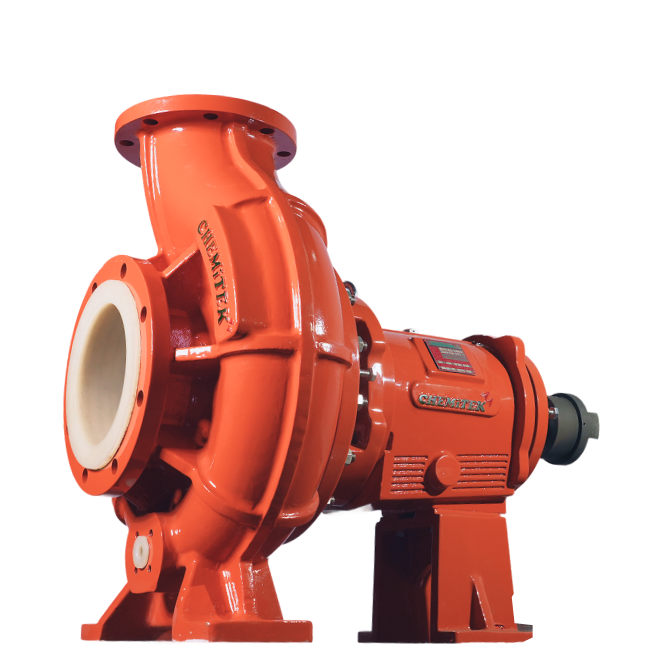
Latest posts
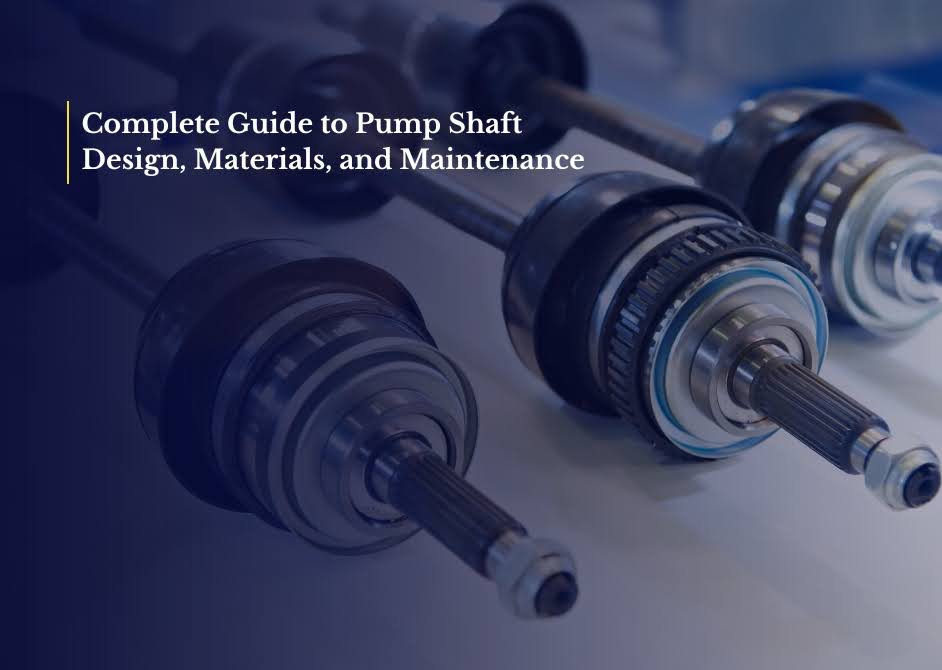
Complete Guide to Pump Shaft Design, Materials, and Maintenance
Ready to Upgrade Your Process Operations?